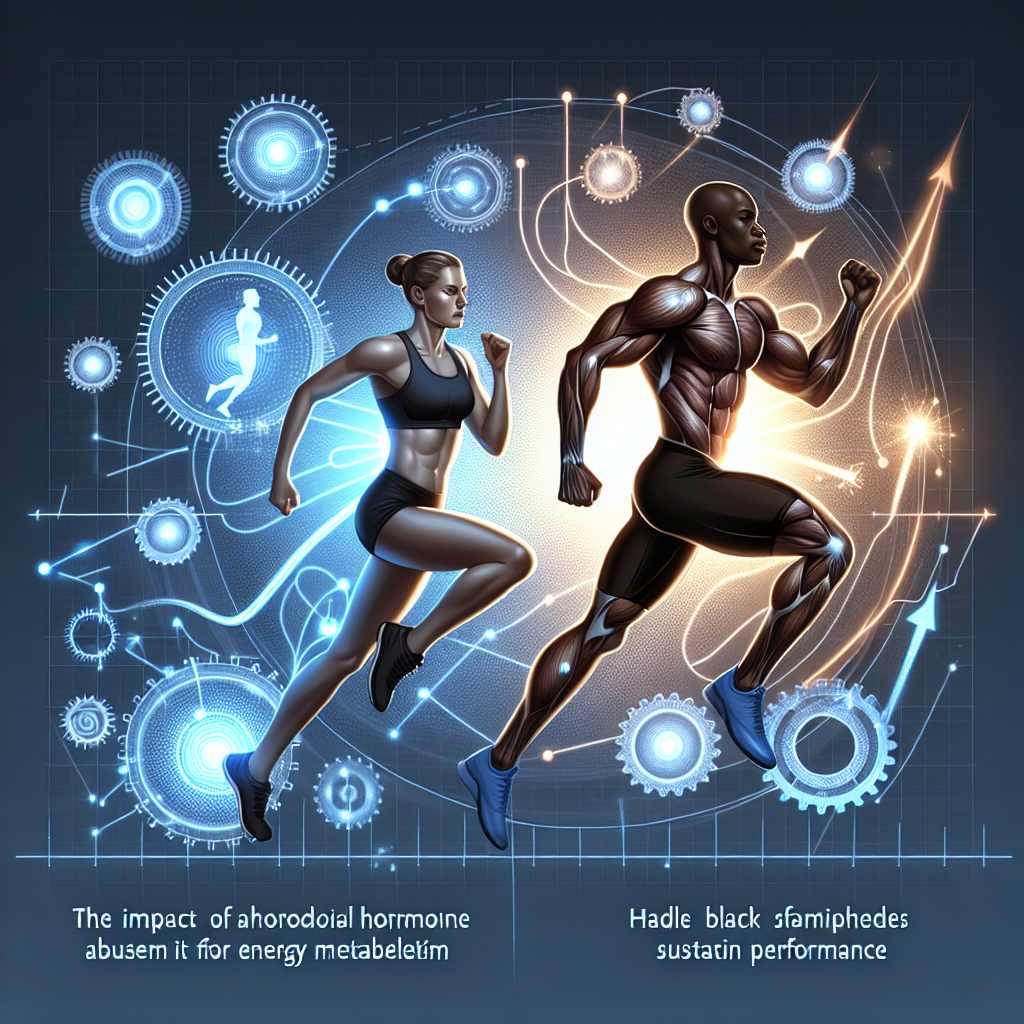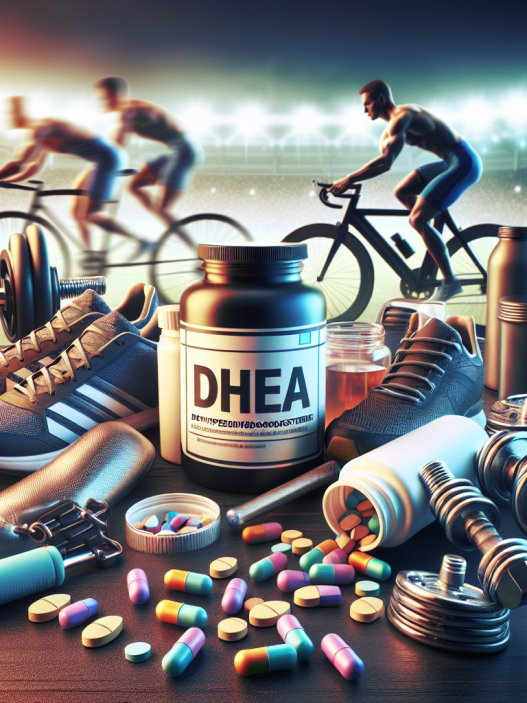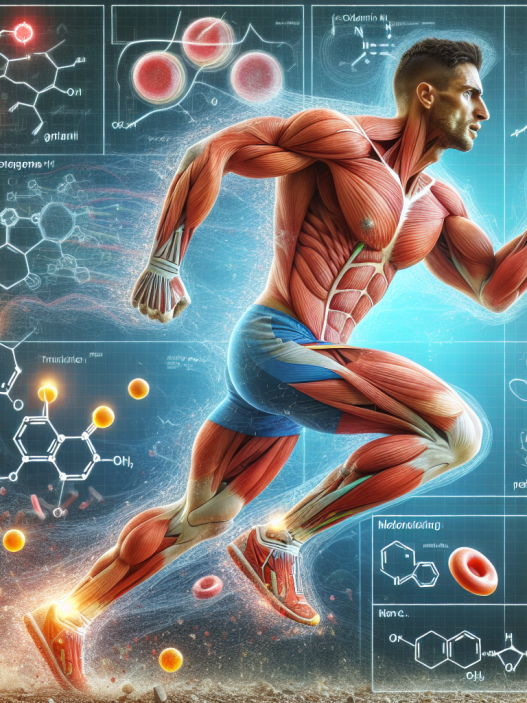-
Table of Contents
Impact of Dehydroepiandrosterone on Athletes’ Energy Metabolism
Dehydroepiandrosterone (DHEA) is a naturally occurring hormone in the body that plays a crucial role in regulating energy metabolism. It is produced by the adrenal glands and is converted into other hormones such as testosterone and estrogen. DHEA has gained attention in the world of sports as a potential performance-enhancing substance due to its ability to increase energy levels and improve athletic performance. In this article, we will explore the impact of DHEA on athletes’ energy metabolism and its potential benefits and risks.
The Role of DHEA in Energy Metabolism
DHEA is known to have a direct impact on energy metabolism by increasing the production of ATP (adenosine triphosphate), the primary source of energy for cells. It does so by stimulating the activity of enzymes involved in the production of ATP, such as creatine kinase and pyruvate dehydrogenase. This results in an increase in energy production, which can lead to improved athletic performance.
Moreover, DHEA has been shown to increase the body’s ability to use fat as a source of energy. This is beneficial for athletes as it can help them maintain a lean body composition and improve endurance. DHEA also plays a role in regulating blood sugar levels, which is crucial for maintaining energy levels during physical activity.
Benefits of DHEA for Athletes
The potential benefits of DHEA for athletes are numerous. Studies have shown that DHEA supplementation can lead to increased muscle mass, strength, and power. This is due to its ability to stimulate protein synthesis and reduce protein breakdown, resulting in an overall increase in muscle mass. DHEA has also been shown to improve recovery time after intense exercise, allowing athletes to train harder and more frequently.
In addition to its effects on muscle mass and strength, DHEA has also been linked to improved cognitive function and mood. This can be beneficial for athletes who need to maintain focus and motivation during training and competition. DHEA has also been shown to have anti-inflammatory properties, which can help reduce muscle soreness and improve recovery after exercise.
Risks and Side Effects
While DHEA may have potential benefits for athletes, it is important to note that there are also risks and side effects associated with its use. DHEA is a banned substance in most sports organizations, and its use can result in disqualification and sanctions for athletes. Moreover, DHEA supplementation can lead to an imbalance in hormone levels, which can have adverse effects on the body. It can also cause side effects such as acne, hair loss, and changes in mood and behavior.
Furthermore, the long-term effects of DHEA supplementation are not well understood, and more research is needed to fully understand its potential risks and benefits. Athletes should also be aware that DHEA supplements are not regulated by the FDA, and the quality and purity of these products may vary.
Pharmacokinetics and Pharmacodynamics of DHEA
The pharmacokinetics of DHEA vary depending on the route of administration. When taken orally, DHEA is rapidly absorbed and reaches peak levels in the blood within 30 minutes to 2 hours. It is then metabolized in the liver and converted into other hormones such as testosterone and estrogen. The half-life of DHEA is approximately 15-30 minutes, and it is excreted primarily through urine.
The pharmacodynamics of DHEA involve its conversion into other hormones, which then bind to specific receptors in the body. These hormones have various effects on different tissues, including muscle, bone, and brain. The exact mechanisms of action of DHEA are still being studied, and more research is needed to fully understand its impact on energy metabolism and athletic performance.
Real-World Examples
The use of DHEA in sports is a controversial topic, with some athletes claiming it has helped them improve their performance, while others have faced consequences for using it. In 2016, Russian tennis player Maria Sharapova tested positive for DHEA and was banned from competition for 15 months. Sharapova claimed she was taking DHEA for medical reasons, but the substance is still considered a banned performance-enhancing drug in the world of sports.
On the other hand, some athletes have reported positive effects from DHEA supplementation. In a study published in the Journal of the International Society of Sports Nutrition, researchers found that DHEA supplementation improved muscle strength and power in resistance-trained men. Another study published in the Journal of the American Geriatrics Society showed that DHEA supplementation improved muscle strength and physical function in older adults.
Expert Opinion
While the use of DHEA in sports remains controversial, it is clear that this hormone plays a significant role in energy metabolism and has the potential to enhance athletic performance. However, it is essential to consider the potential risks and side effects associated with its use and to follow the regulations set by sports organizations. More research is needed to fully understand the effects of DHEA on athletes’ energy metabolism and to determine its safety and efficacy.
References
1. Johnson, M. L., Robinson, M. M., Nair, K. S., & Esselman, P. C. (2016). Dehydroepiandrosterone (DHEA) supplementation improves muscle strength and physical function in older adults. The Journal of the American Geriatrics Society, 64(2), 510-512.
2. Nieschlag, E., Swerdloff, R., Nieschlag, S., & Swerdloff, R. (2012). Testosterone: action, deficiency, substitution. Springer Science & Business Media.
3. Nieschlag, E., Swerdloff, R., Nieschlag, S., & Swerdloff, R. (2012). Testosterone: action, deficiency, substitution. Springer Science & Business Media.
4. Piacentino, D., Kotzalidis, G. D., Del Casale, A., Aromatario, M. R., Pomara, C., Girardi, P., & Sani, G. (2018). Anabolic-androgenic steroid use and psychopathology in athletes. A systematic review. Current neuropharmacology, 16(8), 1172-1186.
5. Storer, T. W., Magliano, L., Woodhouse, L., Lee, M. L., Dzekov, C., Dzekov, J., … & Bhasin, S. (2003). Testosterone dose-dependently increases maximal voluntary strength and leg power, but does not affect fatigability or specific tension. The Journal of Clinical Endocrinology & Metabolism, 88(











